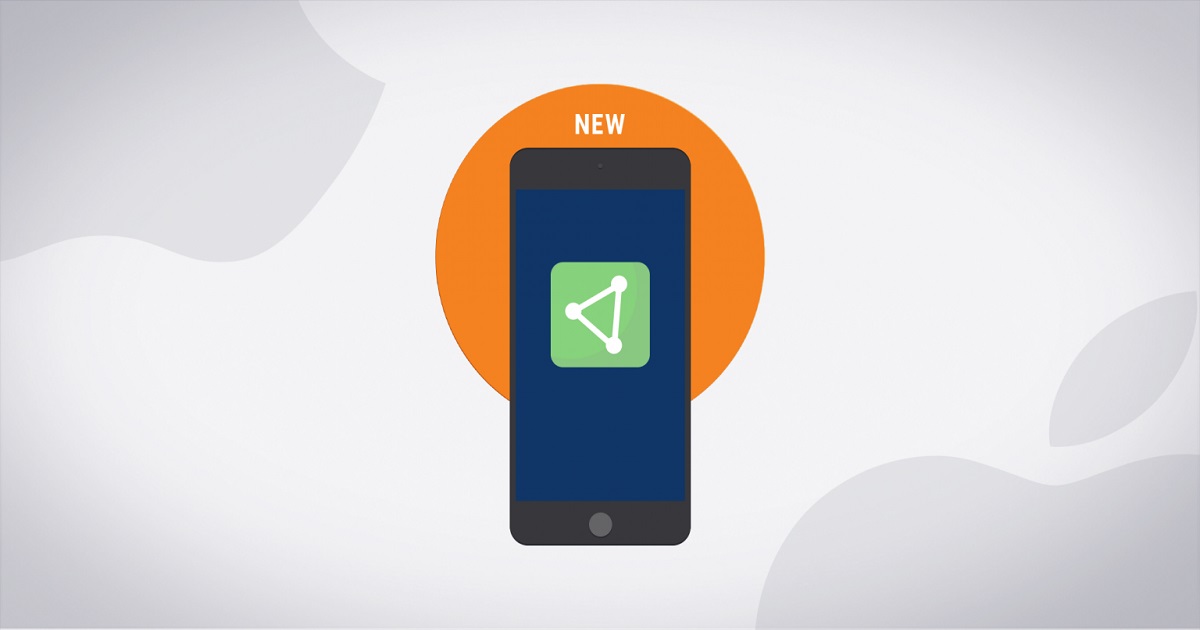
Virtual Desktop Tools
Article | August 12, 2022
Your ProtonVPN iOS app is now better equipped to fight censorship and offers more flexible connection options with the launch of OpenVPN for iOS. The OpenVPN protocol is one of the best VPN protocols because of its flexibility, security, and because it is more resistant to blocks. You now have the option to switch between the faster IKEv2 protocol and the more stable and censorship-resistant OpenVPN protocol.
Read More

Server Hypervisors
Article | May 18, 2023
It is no surprise that e-commerce has grown dramatically in recent years. I don't want to be boring, but certainly the pandemic and a few other market factors have had a role.
From ancient times, marketplaces of all shapes and sizes have served as the foundation for all types of business. As the world transforms and becomes more digital, the rise of digital marketplaces, e-commerce, and other types of online business is exploding.
E-commerce marketplace platforms are rapidly expanding in the digital environment and are expected to acquire momentum as the future of e-commerce. This increase is because of the fact that online marketplaces combine user demand and provide customers with a broader selection of products.
Digital Marketplaces Are the Way to the Future of E-Commerce
Without a doubt, online marketplaces will dominate the e-commerce business in the coming years. According to Coresight Research, marketplace platform revenue will more than double, reaching around $40 billion in 2022. This means that by 2022,
online marketplaces will account for 67% of worldwide e-Commerce revenues (Forrester).
Today, the issue is not whether you sell online but how far you can reach.
E-commerce offers limitless opportunities, and all you need to do is keep pace with the trends. What are you doing right now? How far can you go? Have you already made the transition from local to global?
Digital marketplaces are indeed the way of the future of e-commerce. The earlier you realize this and integrate it into your sales and marketing approach, the better. I really mean it.
The world is changing, and your competitors are not sleeping. You cannot overlook this trend if you really want to stay ahead.
It's all about the people in business, as it has always been. Understanding who you're pitching to is critical to your success. You should be aware. Everything you do in business should get you closer to your target audience.
Closing Lines:
Digital marketplaces are indeed the future of commerce. People will inevitably start shopping online even more in the future. That implies methods and means will be developed to make such transactions easier for the common individual. Explore how your business might profit from these markets and trends that suggest the future of physical and online shopping.
Read More

Virtual Desktop Tools, Server Hypervisors
Article | June 8, 2023
Contents
1. Overview
2. Ethical Hacking and Penetration Testing
3. Metasploit Penetration Test
4. Why Choose Metasploit Framework for your Business?
5. Closing remarks
1. Overview
Metasploitable refers to an intentionally vulnerable virtual machine that enables the learning and practice of Metasploit. Metasploit is one of the best penetration testing frameworks that helps businesses discover and shore up their systems' vulnerabilities before hackers exploit them.
Security engineers use Metasploit as a penetration testing system and a development platform that allows the creation of security tools and exploits. Metasploit's various user interfaces, libraries, tools, and modules allow users to configure an exploit module, pair it with a payload, point it at a target, and launch it at the target system. In addition, Metasploit's extensive database houses hundreds of exploits and several payload options.
2. Ethical Hacking and Penetration Testing
An ethical hacker is one who works within a security framework and checks for bugs that a malicious hacker might use to exploit networks. They use their experience and skills to render the cyber environment. To protect the infrastructure from the threat that hackers pose, ethical hacking is essential. The main purpose of an ethical hacking service is to report and assess the safety of the targeted systems and networks for the owner. Ethical hacking is performed with penetration test techniques to evaluate security loopholes.
There are many techniques used to hack information, such as –
Information gathering
Vulnerability scanning
Exploitation
Test analysis
Ethical hacking involves automatic methods. The hacking process without automated software is inefficient and time-consuming. There are several tools and methods that can be used for ethical hacking and penetration testing. The Metasploit framework eases the effort to exploit vulnerabilities in networks, operating systems, and applications and generates new exploits for new or unknown vulnerabilities.
3. Metasploit Penetration Test
Reconnaissance: Integrate Metasploit with various reconnaissance tools to find the vulnerable spot in the system.
Threat Modeling and Vulnerability Identification: Once a weakness is identified, choose an exploit and payload for penetration.
Exploitation: The payload gets executed at the target if the exploit, a tool used to take advantage of system weakness, is successful, and the user gets a shell for interacting with the payload (a shellcode is a small piece of code used as the payload).The most popular payload, a set of malicious codes to attack Windows systems, is Meterpreter, an in-memory-only interactive shell. (Meterpreter is a Metasploit attack payload that provides an interactive shell for the attacker to explore the target machine and execute code.)Other payloads are:
Static payloads (it enables port forwarding and communications between networks)
Dynamic payloads (to evade antivirus software, it allows testers to generate unique payloads)
Command shell payloads (enables users to run scripts or commands against a host)
Post-Exploitation: Metasploit offers various exploitation tools for privilege escalation, packet sniffing, keyloggers, screen capture, and pivoting tools once on the target machine.
Resolution and Re-Testing: Users set up a persistent backdoor if the target machine gets rebooted.
These available features in Metasploit make it easy to configure as per the user's requirements.
4. Why Choose Metasploit Framework for your Business?
Significant advantages of the Metasploit Framework are discussed below:
Open-source: Metasploit Framework is actively developed as open-source software, so most companies prefer this to grow their businesses.
Easy usage: It is very easy to use, defining an easy-naming conversation with the commands. This also facilitates the building of an extensive penetration test of the network.
GUI Environment: It mainly provides third-party instances that are friendly. These interfaces ease the penetration testing projects by providing the facilities with services such as button clicks, over-the-fly vulnerability management, and easy-to-shift workspaces, among others.
Cleaner Exits: Metasploit can cleanly exit without detection, even if the target system does not restart after a penetration test. Additionally, it offers various options for maintaining persistent access to the target system.
Easy Switching Between Payloads: Metasploit allows testers to change payloads with the 'setpayload' command easily. It offers flexibility for system penetration through shell-based access or meterpreter.
5. Closing remarks
From DevSecOps experts to hackers, everyone uses the Ruby-based open-source framework Metasploit, which allows testing via command-line alterations or GUI. Metasploitable is a vulnerable virtual machine ideally used for ethical hacking and penetration testing, in VM security.
One trend likely to impact the future of Metasploitable is the increasing use of cloud-based environments for testing and production. It is possible that Metasploitable could be adapted to work in cloud environments or that new tools will be developed specifically for cloud-based penetration testing. Another trend that may impact the future of Metasploitable is the growing importance of automation in security testing. Thus, Metasploitable could be adapted to include more automation features.
The future of Metasploitable looks bright as it continues to be a valuable tool for security professionals and enthusiasts. As the security landscape continues to evolve, it will be interesting to see how Metasploitable adapts to meet the community's changing needs.
Read More

Virtual Desktop Tools
Article | June 24, 2022
Although remote working or working from home became popular during the COVID era, did you know that the technology that gives the best user experience (UX) for remote work was developed more than three decades ago?
Citrix was founded in 1989 as one of the first software businesses to provide the ability to execute any program on any device over any connection. In 2006, VMware coined the term "virtual desktop infrastructure (VDI)" to designate their virtualization products.
Many organizations created remote work arrangements in response to the COVID-19 pandemic, and the phenomenon will continue even in 2022. Organizations have used a variety of methods to facilitate remote work over the years. For businesses, VDI has been one of the most effective, allowing businesses to centralize their IT resources and give users remote access to a consolidated pool of computing capacity.
Reasons Why Businesses Should Use VDI for their Remote Employees?
Companies can find it difficult to scale their operations and grow while operating remotely. VDI, on the other hand, can assist in enhancing these efforts by eliminating some of the downsides of remote work.
Device Agnostic
As long as employees have sufficient internet connectivity, virtual desktops can accompany them across the world. They can use a tablet, phone, laptop, client side, or Mac to access the virtual desktop.
Reduced Support Costs
Since VDI setups can often be handled by a smaller IT workforce than traditional PC settings, support expenses automatically go down.
Enhanced Security
Data security is raised since data never leaves the datacenter. There's no need to be concerned about every hard disk in every computer containing sensitive data. Nothing is stored on the end machine while using the VDI workspace. It also safeguards intellectual property while dealing with contractors, partners, or a worldwide workforce.
Comply with Regulations
With virtual desktops, organizational data never leaves the data center. Remote employees that have regulatory duties to preserve client/patient data like function because there is no risk of data leaking out from a lost or stolen laptop or retired PC.
Enhanced User Experience
With a solid user experience (UX), employees can work from anywhere. They can connect to all of their business applications and tools from anywhere they want to call your workplace, exactly like sitting at their office desk, and even answer the phone if they really want to.
Closing Lines
One of COVID-19's lessons has been to be prepared for almost anything. IT leaders were probably not planning their investments with a pandemic in mind.
Irrespective of how the pandemic plays out in the future, the rise of remote work is here to stay. If VDI at scale is to become a permanent feature of business IT strategies, now is the moment to assess where, when, and how your organization can implement the appropriate solutions. Moreover, businesses that use VDI could find that the added flexibility extends their computing refresh cycles.
Read More